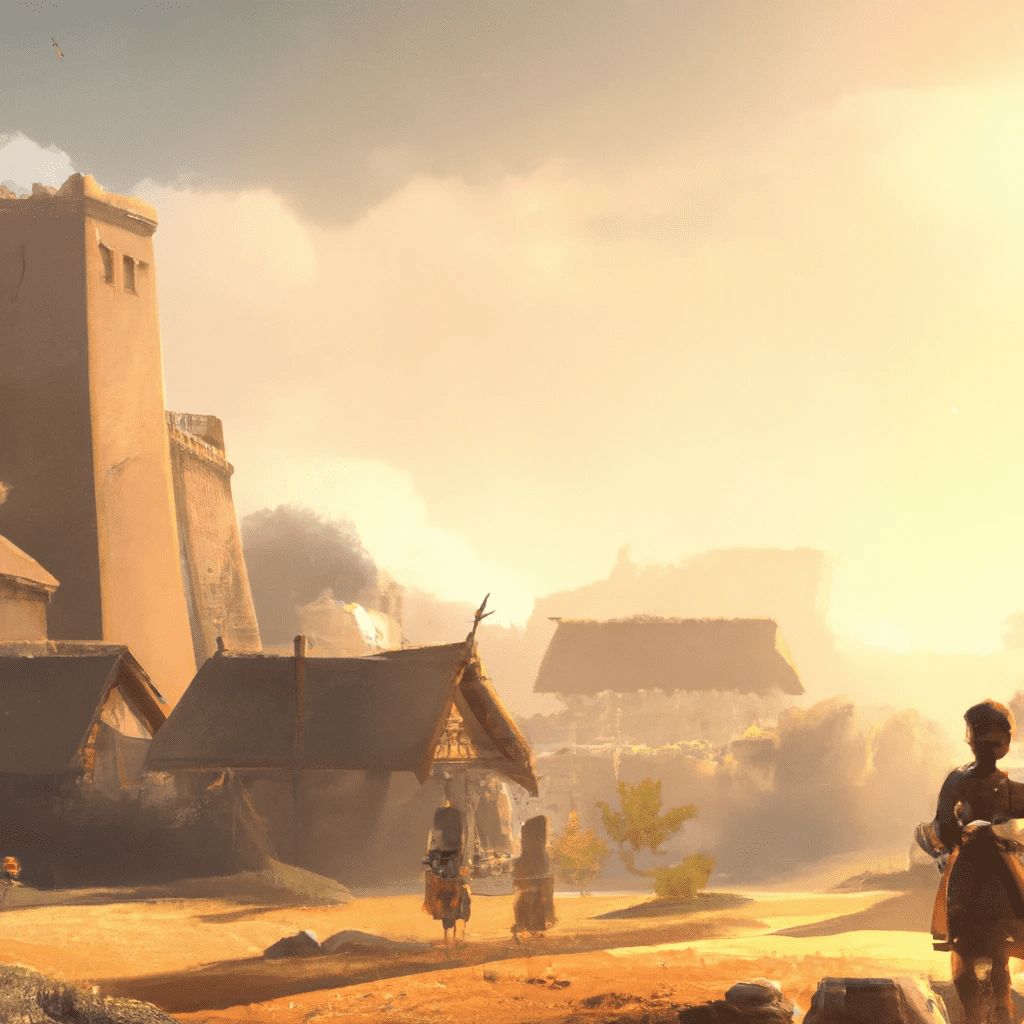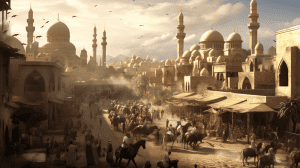Askia Muhammad, a prominent figure in African history, emerged from Gao with a diverse heritage. His rule, marked by cultural and educational advancements, left an enduring legacy in the Songhai Empire.

Early Life
Askia Muhammad’s roots trace back to Gao, where he was born. His dad, Baru Lum, had a mix of Toucouleur and Soninke heritage, with family lines stretching all the way to the Senegal River valley. His mom, Kassey, is remembered in stories as the sister of Sonni Ali.
Rise to Power
Muhammad’s birth details are a bit of a mystery. For ages, people thought he belonged to the Silla clan from Senegal or was from Soninke origins. However, 18th-century records from Timbuktu suggest his name was Muhammad al-Turi or Muhammad of the Toro, pointing to a Tukulor background. It’s likely he came from a Senegalese family that settled in Gao, with his clan possibly being Kan or Dyallo. There’s also a fascinating oral story that paints him as Sonni Ali’s nephew, born to his sister Kasey and a supernatural being.
After Sonni Ali’s death in 1492, who had really put the Songhai empire on the map, Muhammad quickly tried to take control from Sonni Ali’s son, Sonni Baru. In the crucial Battle of Anfao in April 1493, Muhammad’s smaller army surprisingly won. This victory transformed Songhai into an Islamic state, with the Qur’an as its civil code and Arabic as its official language. Post-victory, Muhammad adopted the title Askia, rumoured to mock Sonni’s daughters who doubted his capabilities. This name later became synonymous with the dynasty he established.

Unlike Sonni Ali, the warrior, Muhammad was a master in statecraft. He set up a solid administration in the conquered areas, dividing Songhai into provinces each managed by a governor. He formed a standing army and naval fleet and introduced key administrative roles for finance, justice, interior, agriculture, and even managing relations with the Moors and Tuaregs. These positions were often filled by Muhammad’s noble relatives – brothers, sons, or cousins.
Ruling the Songhai Empire
Muhammad really set a high bar for organizing an African state, topped off with a religious structure. He was a devout guy but didn’t know all the ins and outs of religious orthodoxy. So, he got help from al-Maghīlī, a Moroccan reformer known for his harsh stance against the Jews of Touat. Al-Maghīlī advised on straightening things out in Muhammad’s realm, focusing on reclaiming lands from the defeated Sonnis and converting non-Muslim groups. Muhammad’s decision to make Islam the official religion of the nobility might have been his only misstep. It changed Islam from a grassroots faith to an imported one, later used as a pretext for the Moroccan Muslims to conquer Songhai.

In 1496, seeking divine guidance, Muhammad embarked on an epic pilgrimage to Mecca. This journey became legendary, not just for its grandeur but also for the incredible stories it inspired. Mahmud Kati, who tagged along, wrote in Taʾrīkh al-fattāsh about Mecca’s jinn proclaiming Muhammad a caliph and briefing him on his authority over the Sonnis’ former vassals. By the time he returned around 1497 or 1498, Muhammad had fully embraced Islam and was ready to strengthen and expand Songhai.
This influence was also boosted indirectly by Islamic scholars who ventured into new territories with Muhammad’s backing. For centuries, small African states and neighbouring rulers looked up to the Islamic empire of Songhai and its illustrious leader, Muhammad, as their benchmark. Even today, oral traditions paint Muhammad as a jinni-like figure, either mirroring his father or those mystical beings he supposedly interacted with during his Mecca pilgrimage.
Decline and Death of Askia Muhammad
Muhammad’s final years as a ruler were pretty tough. His vision of an Islamic Sudan with himself at the helm started to fade. Even while he was alive, his kids were already fighting over their inheritance. Things got worse after his chief commander, Kanfari Omar, passed away in 1519. Muhammad didn’t even feel safe in Gao anymore, seeing the people as unpredictable as the Niger River’s twists and turns. Feeling bitter and partially blind, he only had his buddy and advisor, Ali Folen, by his side. The deep respect people once had for him turned into disdain.
His eldest son, Musa, was scheming against him and in 1528, he went as far as killing Muhammad’s loyal general, Yaya, another of his brothers. Musa then took over, calling himself Askia Musa. He only held onto power for three years before being killed by another of his brothers. Deposed and heartbroken, the old Muhammad was exiled to a mosquito-ridden island full of toads, where from 1528 to 1537, he helplessly witnessed his children’s deadly power struggles over Songhai.
In 1537, his third successor and son, Askia Ismaïl, brought him back to Gao. As a token of gratitude, Muhammad gave Ismaïl his green turban and caliph’s saber. Then, in a rare peaceful moment in 1538, the founder of a dynasty passed away. He was laid to rest in Gao under a pyramid-shaped mound topped with wooden spikes. His grave still stands today and is one of the most sacred mosques in West Africa.
Legacy of Askia Muhammad
Askia Muhammad was a staunch advocate of education and literacy. He played a pivotal role in ensuring that the universities in Songhai nurtured some of the most esteemed scholars of the era. Among these scholars was his nephew and confidant, Mahmud Kati. In an effort to consolidate his rule after taking over from the Sonni dynasty, Askia Muhammad fostered strong alliances with the intellectuals of Timbuktu, thereby initiating a period of remarkable achievements in both scientific and Islamic studies in the city.
Notable scholars like Ahmed Baba emerged during this era, authoring influential works on Islamic law that remain relevant even today. Muhammad Kati penned the ‘Tarikh al-fattash,’ while Abdul-Rahman as-Sadi authored the ‘Tarikh al-Sudan’ (Chronicle of The Black Land). These historical works have become essential resources for contemporary researchers delving into African history during the Middle Ages. The legacy of Askia Muhammad extends even to physical landmarks, with his reputed burial site, the Tomb of Askia, being recognized as a UNESCO World Heritage Site.
Sources
- “Touré, Muhammad (c. 1442-1538).” BlackPast. Accessed November 23, 2023. https://www.blackpast.org/global-african-history/toure-muhammad-c-1442-1538/.
- “Muhammad I Askia | Fall from Power and Death.” Encyclopædia Britannica. Accessed November 23, 2023. https://www.britannica.com/biography/Muhammad-I-Askia/Fall-from-power-and-death.
- “Askia Muhammad I.” Wikipedia. Last modified November 22, 2023. https://en.wikipedia.org/wiki/Askia_Muhammad_I.




